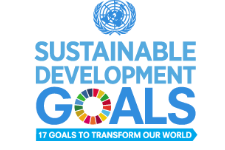 Women released last year a report called “Turning promises into actions” Gender equality in the 2030 agenda for Sustainable Development. The report underlines that progress towards meeting the sustainable development goals for women and girls is unacceptably slow and unless progress on gender equality is significantly accelerated the global community will not be able to keep its promise for leaving no one behind.
Women released last year a report called “Turning promises into actions” Gender equality in the 2030 agenda for Sustainable Development. The report underlines that progress towards meeting the sustainable development goals for women and girls is unacceptably slow and unless progress on gender equality is significantly accelerated the global community will not be able to keep its promise for leaving no one behind.
The 2030 agenda recognizes the crucial importance of gender equality and the empowerment of all women and girls in sustainable development (goal5) as essential for achieving all the interconnected goals ant targets.
One way of doing that is by using infrastructure as a driver for change to improve women’s lives by reducing the demands of household and care work, increase the productivity of their enterprises and enable them to move into better jobs or more profitable markets.
Infrastructure consists of high cost investments that if done well can raise economic growth, productivity and land values and contribute to poverty reduction.
Women’s economic empowerment is about economic equality such as closing the gender pay gap, increasing job opportunities etc. But it is also about breaking down barriers that hold women back: from discrimination laws to unfair share of home and family care.
Empirical evidence on women’s time allocation shows clearly that women bear the brunt of domestic tasks processing food crops, providing water and firewood and caring for children.
How can infrastructure enable women’s economic empowerment? Infrastructure provisions can reduce the time women spend on domestic tasks and free up time for productive economic activity.
For example, mobility improvements in transportation infrastructure can have significant effects on women’s physical mobility leading to higher paid jobs for women and new opportunities for business expansion.
Moreover the construction of new transport, ICT and energy facilities can create new job opportunities as for example jobs for women in the transport sector taking on roles as bus drivers, ticket collectors and taxi drivers or in the construction business which increasingly involves women as constructors, semi-skilled and skilled workers, supervisor engineers. However, in this context women have to break through gender barriers and enter traditionally male dominated sectors.
Unsafe market spaces, transport and public spaces expose women workers and traders to gender based violence and limit their economic opportunities. The perceived and the actual risk of gender based violence have a significant impact on women’s economic participation. Road, rail and port projects can do their part to narrow the gender gap by featuring well lit roads, women only carriages and resting and waiting areas.
It is important to note that infrastructure investment by itself does not result in inclusive growth. The quality and cost of access to services are critical to the potential of these investments to impact low income and marginalized groups whose members are disproportionately women.
We also have to note that most infrastructure is gender blind thus empowering men and reinforcing women’ s role as one which is primarily with household tasks.
In order to engender infrastructure projects women need to be part of the decision making in all phases of these projects. Giving them a voice will help to reduce gender inequality.
Women are usually at the household nexus of water, food and energy and they often know first hand about the challenges and potential solutions in these areas. So, women are the most convincing advocates for the solutions they need so they should be at the forefront of decision making in sustainable development. A precondition for engendering infrastructure projects is to amplify women’s collective voice to demand access and use infrastructure and services.
The process of demanding improvements in infrastructure by low income women especially in urban areas can by itself be empowering. This is a key strategy and precondition for engendering infrastructure which can have potentially transformative impacts. At the global level we have a number of women led community driven demands by networks of urban poor that have been very successful in negotiating collectively with municipal authorities for improved infrastructure. They have also transformed women’s involvement in municipal government processes.
We should also monitor the gender outcomes of infrastructure projects and build a database for successful gender approaches that can be replicated or scaled up. We should also elaborate and adopt outcome indicators such as income change for female workers etc.
Unfortunately, most infrastructure is seen to help women deliver outcomes that benefit their family, community and state rather than address their own individual needs. In other words, gender remains framed within an economic empowerment approach where women’s work matters not for women themselves but for their ability to participate in markets. This is a pro market approach that we should reject in favour of an approach that is based on the human rights of women.
So, an important precondition for engendering infrastructure projects and facilitating access to and use of them by women is the adoption of a strategy aiming at challenging social norms that are based on gender stereotypes and influence women’s ability to access and use infrastructural resources at all levels.
Another obstacle to engendering infrastructure projects is the fact that this sector is usually run by people that have technical expertise and are unfamiliar and not sensitive to gender equality or the tools used by gender equality specialists. States should undertake efforts to reconcile the two approaches.
Another constrain to effective mainstreaming has to do with traditional practices like child marriage that perpetuate disparities and violate human rights. Very often the practices of child marriage continue in many countries because there is no capacity of the state to deal with it by employing social workers and elaborating policies to deal with gender based discrimination as well as proceed with structural changes to end this harmful practice. The states should also try to demystify all myths and cultural beliefs surrounding traditional practices.
Finally, the most important question to be asked is whether it is possible to use infrastructure as driver for change as long as neoliberal policies dominate in parts of the world. When subsidies are cut from poor and marginalized groups in rural and urban areas, when funding for social services and social infrastructure especially education and health services are cut, then we should question whether neoliberal approaches to development policies can bring about change. We should also question, whether infrastructure provisions that free up time of women in the developing world for labour force participation in the formal sector is a step forward in empowering these women.
Numerous evidence based on research demonstrates how markets themselves seem to be structured to perpetuate and exploit economic inequality. This model relies heavily on women’s wage labour, especially low wage work in service and manufacturing. The reality that underlines this new model is depressed wage levels, decreased job security, declining living standards, steep rise in the number of hours worked for wages, exacerbation of the double shift and rising poverty increasingly concentrated on female headed households.
How can this process represent empowerment for women? Governments, the private sector, women’s NGOs and feminist groups should work for a new development model that prioritizes people over profits. Equal societies do better on just about every available metric: health, crime rates, education etc.
Recommendations:
Governments should:
- Implement infrastructure projects to reduce the time women spend on domestic tasks and free up time for productive economic activity.
- Implement infrastructure projects that create new job opportunities and that protect women workers and traders from gender based violence.
- Engender infrastructure projects by having women participate in the decision making process in all phases of them.
- Monitor gender outcomes of infrastructure projects and adopt and implement relevant indicators.
- Elaborate infrastructure projects that look after women’s unique needs and experiences.
- Implement strategies aiming at challenging social norms that are based on gender stereotypes and influence women’s access and use of infrastructural resources.
Finally Governments, the Private sector, Women’s NGOs and Feminist groups should work for developmental policies that prioritize people over profits.


